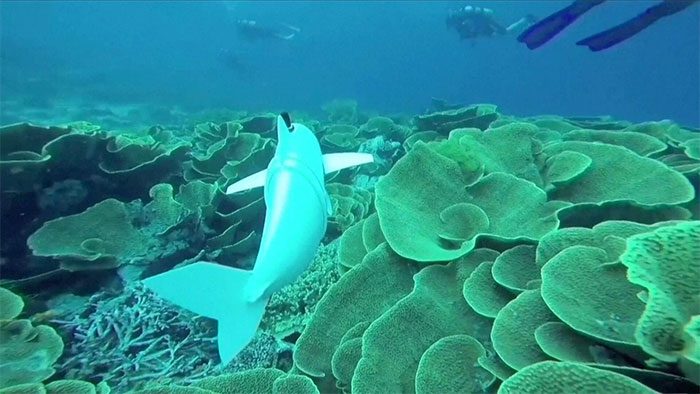Researchers in Switzerland have developed an automated robotic fish capable of providing marine biologists with a clearer, more comprehensive view of underwater organisms without disturbing their habitats.
The robotic fish can collect environmental DNA (eDNA) samples and capture underwater footage, offering a detailed overview of the seabed environment while minimizing negative impacts on benthic organisms.
The robotic fish is named Belle, specifically designed to gather valuable research data and monitor the benthic zone with minimal disruption to marine life.
Leon Guggenheim, a mechanical engineering student at ETH Zurich, the Swiss Federal Institute of Technology, told Reuters: “We want to record and understand ecosystems in completely natural habitats.”
Mr. Guggenheim noted that Belle operates silently, moving like a real fish without producing mechanical noise or causing disturbances while navigating through water.
Switzerland develops AI robotic fish for deep-sea research, particularly in coral reef areas. (Video EuroNews. Next)
Robert Katzschmann, a robotics lecturer at ETH Zurich, explained: “These underwater areas are particularly vulnerable to mechanical systems that use propellers, which can damage coral reefs or scare away fish species.”
The robotic fish employs Artificial Intelligence (AI) technology, allowing it to navigate autonomously underwater, collect DNA samples, and capture high-resolution videos while seamlessly integrating into the coral reef environment.
Measuring less than one meter and weighing nearly 10 kg when out of the water, Belle is propelled by a silicon tail fin with two chambers that cyclically pump water.
“An electric pump system fills and drains these chambers; the pressure change moves the fin back and forth, as one chamber creates high pressure while the chamber on the other side forms a vacuum. The pressure differential bends the fin in a specific direction,” Guggenheim explained.

Robotic Fish Belle.
The design goal is for the robot to operate fully autonomously for 2 hours before the environmental DNA filter (eDNA) becomes full and the robot needs a battery replacement.
Dr. Guggenheim stated: “The robotic fish surfaces, sends us a GPS signal, and we will come to collect the device. Of course, it could be designed to send data to the operators, but the idea is that the mission lasts too long, so the battery must also be replaced or recharged, and the environmental DNA filter must be changed. Therefore, it is not necessary to send data when scientists have to manually retrieve data from the environmental DNA filter.”
The research team hopes that their robot will assist marine biologists in studying the health and biodiversity of various coral reef ecosystems, which have been severely impacted by overfishing, seabed pollution, and climate change.


















































